
Give Jazz a Chance
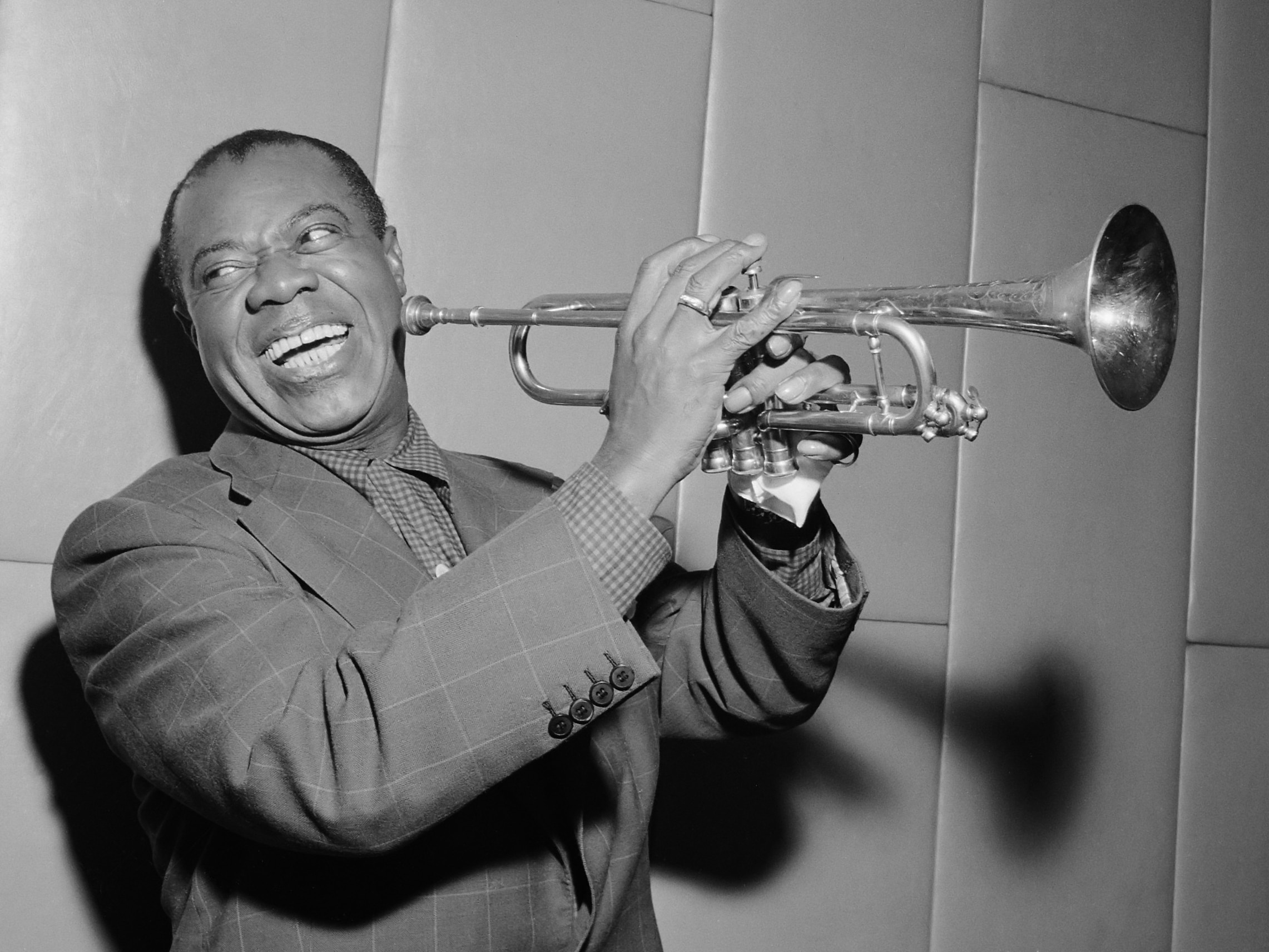
He posed a single question: No matter whether you love the United States, hate it, or are indifferent to it, what is nevertheless the single greatest good that the U.S. has done for the world?
Hands shot up with answers ranging from “Jeffersonian democracy,” “Landing a man on the moon,” “Immunizations against diseases” to “helping Europe and Japan after WW2.”
The speaker, clearly unimpressed, instead argued that the greatest U.S. contribution has been to use its Navy to ensure that the world’s sea lanes are open and safe. With open sea lanes nations can engage in trade. With trade comes prosperity, and with prosperity comes an environment in which citizens can build stable governments. In turn, stable governments can then foster world peace.
If the Germans can transport their shiny new autos to South America, for example, or the South Koreans can send their products to Canada, the world is ultimately a better place.
This view deeply impressed me and I have viewed the world’s affairs through this prism ever since.
Others, with less of a geo-strategic view of the world, maintain that the U.S. has done other good things—outstanding BBQ for example. I am particularly fond of this argument as the level of BBQ in the old USA is unequaled—there really isn’t even a second place.
Yet there is a third gift that the U.S. has given to the world and that is Jazz—one of the most sublime and pleasurable listening experiences possible. A type of music that can indeed be challenging and bewildering, but is always exquisite. Jazz is all of those things and more, but it could only have come from a certain place and certain time—that being New Orleans of the late 1800s and early 1900s.
When I was young, I was told that an appreciation for jazz, for most people, only comes with age. It is like a preference for single malt scotches, long lectures on history and art, or the desire to travel around the country in a motor home—in other words it is an acquired taste for older folk. Sure, there are legions of young jazz musicians around the world, but there is truth in the point.
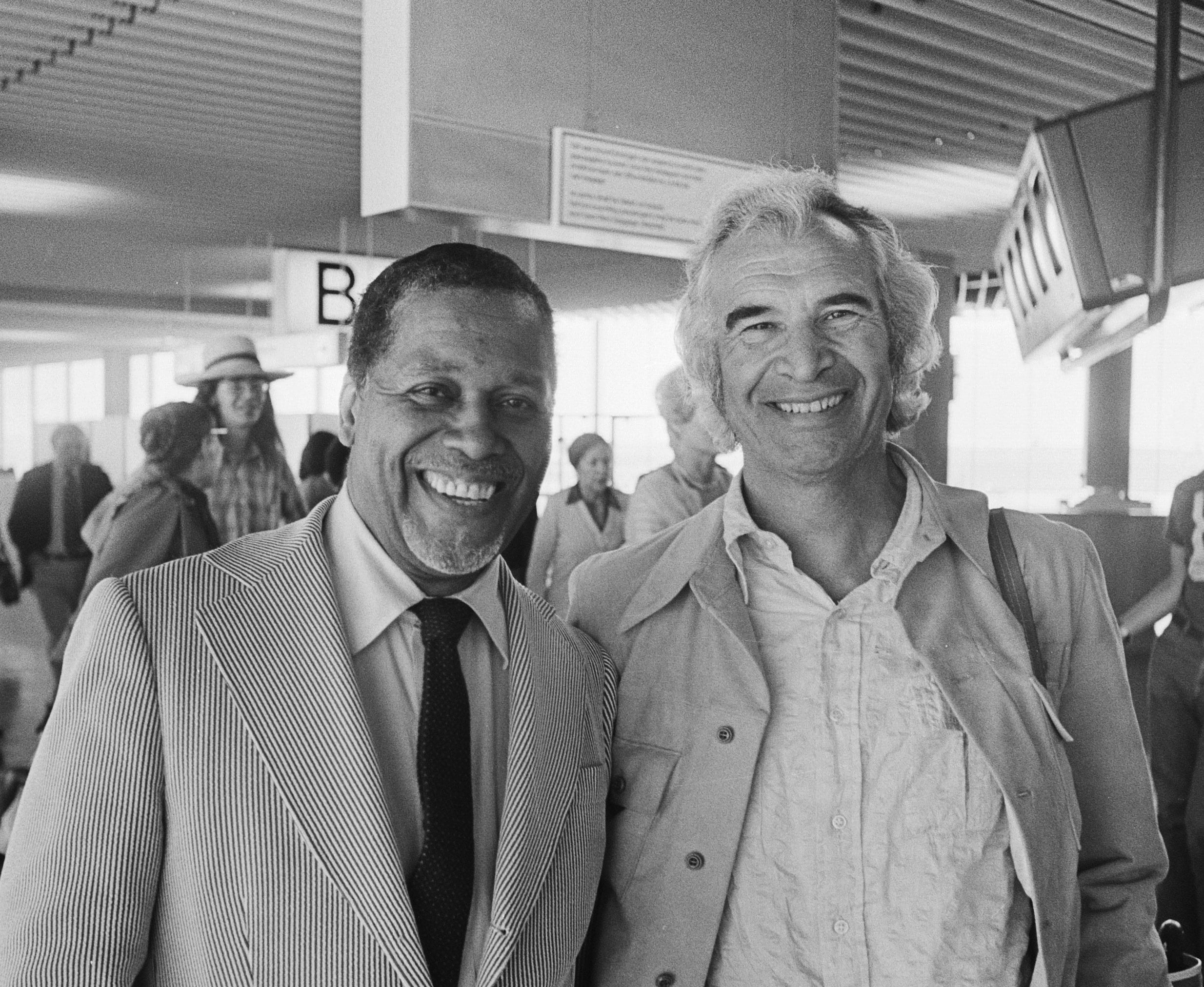
John Lewis & Dave Brubeck
Circa 1977
Sadly, only now am I listening to jazz with the attention it deserves. For too long I was put off by what I perceived as snobbery among jazz aficionados. Nor did I like what seemed to me to be the loud and angry bleatings of a saxophone—for which I even cursed Belgium’s Antoine-Joseph “Aldolphe” Sax for having invented the blasted thing in the first place. Most of all, I was frustrated at my inability to follow, or even discern, a melody and harmonies. I preferred pop and rock because, with their easy flow of ear candy, they were much more accessible.
Now, however, I have discovered that my misgivings were misplaced. For jazz is not, as I had long imagined, just a loud saxophone or unstructured improvisation, but rather a genre that offers endless listening experiences for any taste. In fact, once you find what you like, you realize how fortunate you are to be alive just to hear its brilliance.
Jazz, like many things American, is the product of seemingly incompatible influences—influences that were mixed into a melting pot of cultures, races, musical interpretations, and personal forms of expression. Jazz had a hundred set of parents when it was born in New Orleans in the late 1800’s when it arose from street festivals and in the call and response found in gospel churches. It found life in saloons, brothels, and wherever music was being made—which was just about everywhere in that city.
It sewed together threads of European classical music with such things as the military marches of John Phillip Sousa. It melded the Blues of the Mississippi Delta with music that arrived on the city’s docks from all points on the compass. Musicians then took these strains, and in the crucible of tens of thousands of jam sessions, crafted a new sound that wasted no time in capturing the public’s imagination.
Although there were a few white musicians in New Orleans who plied their trade, it was the Black and Creole Americans who really created jazz. Without them it would have simply never have found a start. They were the ones who, almost single-handedly, midwifed it, raised it through a raucous childhood, and made it into an art form.
The spark that only Black America could deliver was as much a musical style as it was a story of life’s joys and sorrows. Like the Blues that fed into jazz, it sprung from the soul and was something that never could be content with being “just another sound.” To ensure its uniqueness, the secret sauce of swing was added—a brilliant addition that gave jazz its punch.
Whether it is a military march or Chopin’s Etudes, until jazz arrived on the scene, music consisted of notes played one after another with proper and precise spacing.
Jazz, however, breathed life and excitement into the notes by swinging and shuffling them with variations in spacing, rhythm, and movement.
In the first few decades of the 20th century, when African Americans moved from the American South to the industrial North in search of good jobs, jazz went along for the ride. During these years of the “great migration,” jazz found a home in Kansas City, St. Louis, Chicago, and New York. When the U.S. entered WW1, soldier-musicians took it to France where it met a rousing reception and remains wildly popular all over Europe to this day.
In the 1920’s however, two geniuses appeared on the scene and brought jazz to new levels. With a brilliance that is undiminished nearly 100 years later, these men were fun, exuberant, and captivating. They were, of course, Louis “Satchmo” Armstrong (fittingly born and raised in New Orleans) and the stylish, elegant, and sophisticated Edward “Duke” Ellington.
Armstrong played the trumpet like no man before him and very few since, while Ellington used the piano as a springboard for his orchestral compositions. As examples of Ellington’s swing composition, I offer up his It Don’t Mean A Thing If It Ain’t Got That Swing (Swing) and Take The A Train (Train) and for his more classical jazz sounds, we turn to his In a Sentimental Mood (Mood) or Mood Indigo (Indigo). For Armstrong, two early recordings, West End Blues (Blues) and his version of Stardust (Stardust), give the listener an idea of his stupendous talent starting to burst forth.
Have a drink…no don’t…yes do.
In the early 1920’s the United States government passed the Volstead act prohibiting the sale of alcohol. Known as Prohibition it was a colossal mistake for many reasons, but it inadvertently rocketed jazz forward. When organized crime moved in to provide liquor (think of Al Capone in Chicago), hundreds of speakeasies sprung up in the big cities. Naturally, where there is drink there is music—and the music of that era was jazz.
These speakeasies suddenly had a need for performing musicians, and it was in the crucible of these clubs that countless artists honed their skills as they crafted jazz’s textures and sounds.
In the 1930’s and early 1940’s big band music took hold. Clarinetists such as Artie Shaw with his famous Begin the Beguine and Benny Goodman with Sing, Sing, Sing led the charge with a more popular variant of jazz. Perhaps the capstone of this big band sound was Glenn Miller’s easy recognizable, and these days nearly insufferably omnipresent, theme to the WW2 era In the Mood.
Yet this swing and big band music was a detour from the jazz of just a few years earlier. In fact, many expert commentators do not even consider big band music to really be jazz at all but rather pop orchestrations. Even many who played it, like Artie Shaw, grew tired of it—much in the same manner that rock groups like the Beatles would one day grow weary of the concert circuit and yearn for new musical challenges.
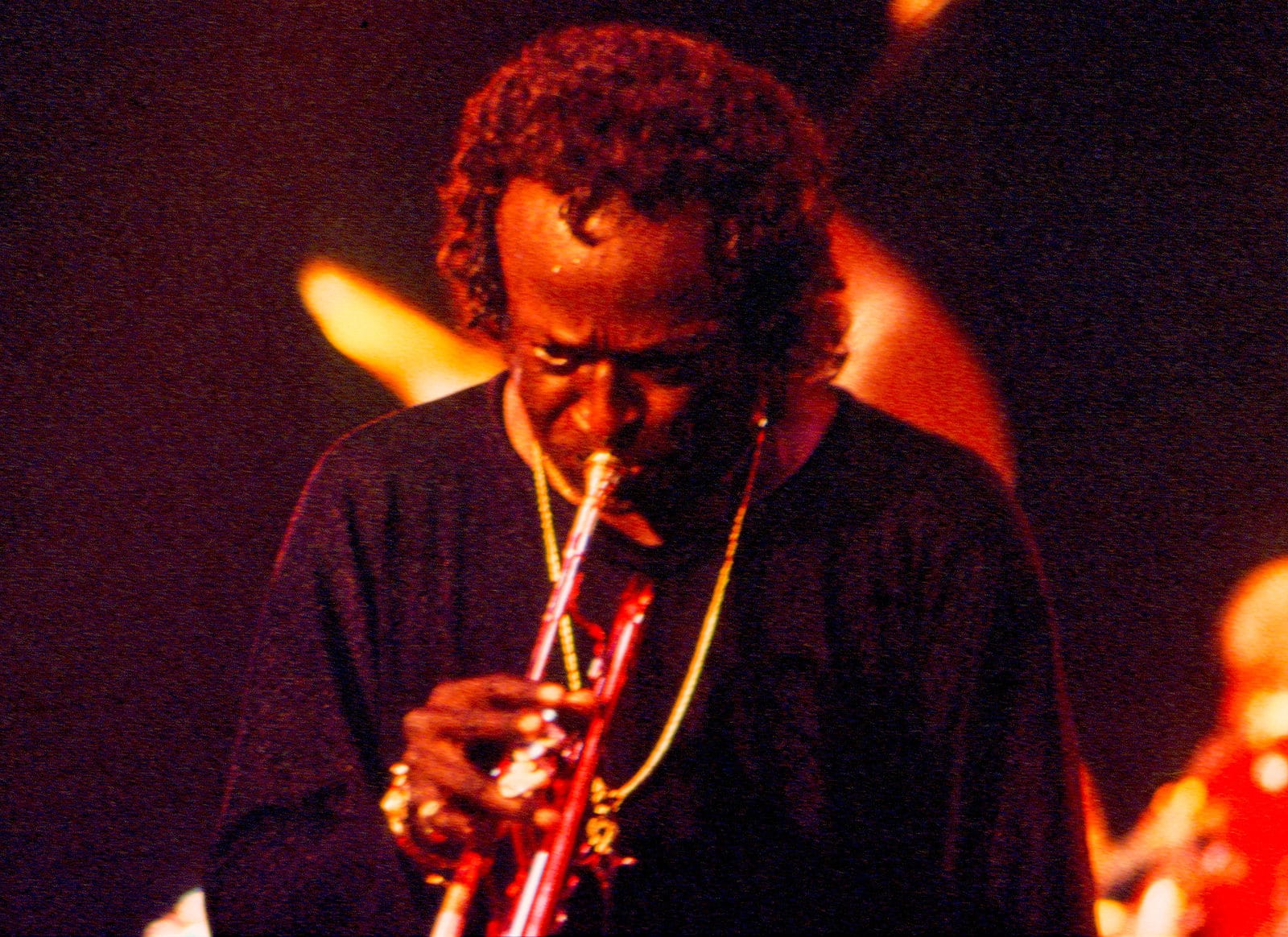
Miles Davis
His last concert at the North Sea Jazz Festival in 1991
After WW2 there was a backlash against this big band sound and jazz took a turn to a stripped-down, rawer, and more spartan delivery. Four or five-piece ensembles again became the norm instead of bloated full bands with all their finery and a dozen or more members. Saxophonists such as Coleman Hawkins, Lester Young, and the inimitable Charlie “Bird” Parker along with trumpeter Dizzy Gillespie led the way into bop and bebop in which technical excellence, improvisation, and a free-flowing approach was key. These musicians developed themes within songs that richly rewarded a listener’s attentiveness and patience. This style, it almost goes without saying, directly challenged the concept of a popular melody being packaged into a quick and easy three-minute rendition.
Jazz also reflected the personal and social struggles of these artists—many of whom unfortunately wrestled with heroin and substance addictions. Emotion, never far from the surface in jazz, now mixed with the deep currents of the cultural upheavals of the day.
The mid to late 1950’s and early 1960’s produced, perhaps paradoxically amid those cultural upheavals, some of the most relaxing and listenable jazz of all time. Dave Brubeck’s quartet on the LP Time Out features the stunning Take Five while Miles Davis released a series of first-rate albums such as Walking, Working, Cookin, Relaxin, Miles Ahead, Round About Midnight and his masterpiece Kind of Blue which, as a critical and commercial hit, is the greatest selling jazz album of all time. It is all the more remarkable that Davis, along with his band-mates Cannonball Adderley, John Coltrane, Bill Evans, Jimmy Cobb, and Paul Chambers recorded the entire album in just two sessions.
Davis was, by any standard, the complete embodiment of cool—perhaps the coolest man alive in the late 1950’s. Angry, mercurial, but brilliant, he was always a force to be reckoned with. Yet the indignities he fought against were real. One night, as he stepped outside the club he was playing in New York to have a smoke, he was promptly beaten by a policeman who thought he was loitering and should “move on.” And this was in downtown New York of all places and not some backwater enclave! It gives you an idea of what many of the musicians of the day faced.
Yet he channeled his frustrations into a propulsive force that pushed his music forward and honed his instincts in gathering just the right musicians around him to get the sound that he wanted. Throw in his willingness to experiment with tonal textures and the results are breathtaking. Yet Davis is just one example—there were many others who were, at the same time, also exploring various avenues within jazz to see where they would lead.

Dutch Swing College Band
Circa 1960 when jazz festivals were all the rage
What then was my problem when I was younger?
I’ll return to some of the post 1960 jazz developments in a part 2 of this discussion, but I would like to discuss for a moment why it took me so long to give jazz a good listen.
The first reason is that I felt many jazz followers to be snobbish. We all know “wine snobs,” but I had encountered a few in the jazz realm as well. I do understand, however, that skilled musicians spend years gaining practical, theoretical, and performance expertise and it is very unfair to demand that they always cater to the beginner listener. They also have a legitimate need to use the precise language of music in order to communicate with their band-mates, composers, and producers.
Yet while all music needs a specific vocabulary, it can overwhelm an amateur and can sadly be wielded by some serious jazz aficionados as a “I have a secret” kind of thing. Jazz can be challenging enough, and any snobbishness only serves as a disincentive and an impediment to those who are genuinely curious.
For example, moments ago I paid respect to the likes of Armstrong, Ellington, Brubeck, and Davis. Yet I have run into serious jazz fans who would gasp at what they consider to be my middle-brow, if not low-brow, selection. Instead, they would expound on some gig they heard, either live or recorded, at some out-of-the-way club with this or that artist. Well, if the game is who can name the more obscure musician or performance, then that is a game that I and many others do not wish to play. I have read critics who write of Miles Davis being “technically adequate.” What a joy it must be to hang out with them…not!
The second reason that I avoided jazz for so long was my frustration at not having the slightest innate musical skill. How could I keep up with the sophistication of jazz if I could not follow even the most basic sounds and rhythms? How can one learn the color wheel if one is color blind? Thus, when I tried in my twenties to listen to jazz, I inadvertently waded into very deep waters and, without any guidance, was quickly in over my head.
All that is my own problem of course, but I admire how readily that those with innate musical gifts can feel and follow the music. I was always stuck at square one trying to determine where the melody and harmonies were. Yes, I really do need to have it spoon fed to me!
Third, who can forget those “Smooth Jazz” stations that popped up in the big cities in the 1980’s? They were broadcasting “jazz” music so syrupy and sugary that it was enough to send you into insulin shock. I am not sure if experts consider Kenny G to have been playing real jazz, but stuff like that was a serious buzz kill.
What then was the turning point?
Technology! Help arrived in the form of writers, artists, and teachers who use the internet and YouTube to open jazz up to the average Joe and Jane. By taking the time to explain jazz, they allow us to engage, understand, and then enjoy.
While good teachers have always been among us, technology gives us immediate and easy access to them—something that was impossible for many of us years ago. A teacher with clear language and a lack of pretension can provide us with the proper introduction that jazz needs.
We all say, for example, that we enjoy Shakespeare. But we also know that we need to go to the playhouse forearmed with a solid explanation of the Bard’s language, plot lines, and his obscure references. The same applies to jazz.
Once I found these online teachers the fog cleared and jazz opened up. They explained jazz as a musical conversation in which one musician puts forth an idea while the others consider it and then, in turn, offer replies of their own. Ideas are “quoted,” “exchanged,” refuted,” or “furthered.” Wow! Why couldn’t this clear explanation have been stressed years ago when I sat, bored out of my mind, in a middle school music class?
The modern internet teachers also know the best places to start. They don’t plunge immediately into bop, bebop, and the more challenging works. Instead they introduce artists like Armstrong and Brubeck and leave the more challenging pieces for later. There is no doubt that Armstrong and Brubeck did much sophisticated work, but they are accessible artists and are good entrance ramps for the newly interested. Think of a painting by Van Gogh. Experts spend entire careers analyzing the brilliance of his work but a newbie can, on first glance, appreciate what is on the canvas.
These good teachers also help us appreciate what we, at first, might not like. I was completely baffled when I first heard the piano great Thelonious Monk, but once a teacher explained the logic behind his playing, he suddenly became enjoyable. One can listen to how he starts a theme, goes on a journey with it, and then, returns to the start. When teachers explain such things, it allows all of us, no matter what our musical interests, to give jazz a chance.
Oh, if you find the hipsters of our modern era annoying, I will spare you the videos of the Beatniks of the ‘50s and ‘60s trying to play it cool as listeners at the jazz clubs. Their quest to be hip looks pretty bad on film. I am not sure if they had a genuine interest in the music or they were just acting. Either way, I can only imagine what the musicians on the stage thought of this crowd!
In the meantime, happy listening!
![]()
1. W.C. Handy, known as the “Father of the Blues” deserves mention here. While he concentrated more on the Blues, his musicianship and efforts in publishing blues and jazz music sets him apart as one of the greats in American music. I must defer to the experts, however, to explain the differences in jazz and the blues and the different evolutionary paths they followed.
2. One of the reasons that I was reluctant to write on this topic was that when one mentions a jazz great a dozen more are in the wings deserving of a shout-out. Many of these, such as the vocalist Billy Holiday as just a single example, have had numerous books written about them. Jazz is such a deep and wide musical genre that it would take many lifetimes to be familiar with all of it. Looking on Amazon I saw that just a dictionary of jazz ran to three volumes so I can hardly imagine how many volumes an encyclopedia would need.

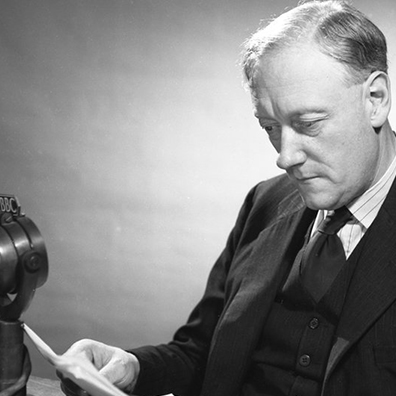
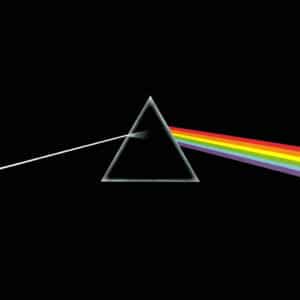
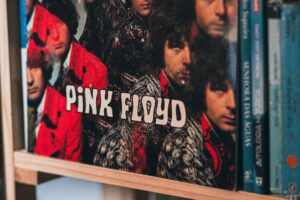

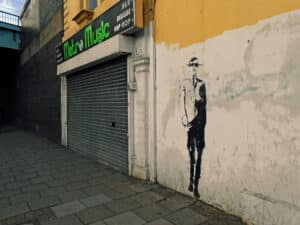

Neal – great piece! To borrow from the jazz lingo I believe your writing is in a groove,
Bravo Neal!!
The first reason is that I felt many jazz followers to be snobbish. We all know “wine snobs,” but I had encountered a few in the jazz realm as well.
Neal,
I’m really into wine and I say I’m a jazz fan.
For a little over 20 years I’ve worked in various winery tasting rooms.
My approach to serving a customer wine today is much different than it was when I first started.
In my earlier wine life a customer might say, “you’re the expert, tell me what’s good”.
Now, I pour small tastes of five or even ten wines. I say, “taste them, tell me what you like, and then we’ll talk”
If they choose the low-priced bottle on sale and pass by our award winning whoop-de-do bottle—well, they picked the one they liked! We both know they like it! Now I’ll tell them about it and probably sell them at least a bottle of it. The key thing is: they like it!
Now, when it comes to jazz, there is a broad range of artists and styles. Why can’t I just listen to what I like? And, I don’t like it all or even most of it, but I do like some of it!
Here in the San Francisco Bay Area we have the nation’s only 24-hour jazz radio station. Sometimes I turn it on while driving and after a few minutes decide I’m listening to noise and turn it off again. I don’t care how many awards a piece won; I don’t like it. I probably won’t get invited to certain people’s houses, but, you know, I don’t really care.
The station is KCSM. the College of San Mateo, 91.1 on the FM dial and streaming on the web at KCSM.org.
There are two programs I can count on liking 95% of what is played: they’re both on Saturday.
Dick Conte, 2 until 6 Pacific Time, and Michael Burman, 6 until 9.
If they were winemakers, I’d like the grapes they choose to use and I’d like the methods they’d use to make the wine.
I don’t need to hear any more than that.
I like what they do and I listen or drink and I smile!